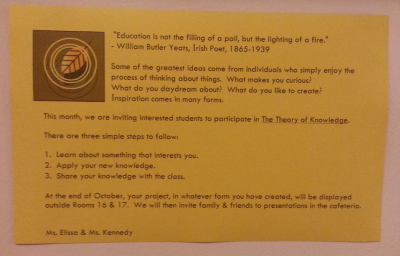Thinking About The Verbs
5 min read
Last night, Daniel Scibienski shared a graphic he created about using git to share lessons. This sparked a discussion about the merits of git to share lessons, and about whether curriculum is part of the solution, or a problem that needs to be eliminated. There's a fair amount of context that surrounds these questions; in this post, I'll dig into some of the gray areas that often get in the way of a complete discussion of these ideas.
Actual curriculum compared to the curriculum needed for the business plans
We need to separate actual curriculum from the current models of distributing curriculum, and the ways in which people are advocating curriculum should be used. Companies like Pearson lobby heavily on issues related to education policy; not surprisingly, when laws get written that shape what education should look like, Pearson has both a textbook and an assessment package ready to meet that "need." This is a polical and economic reality that needs to be addressed; blaming curriculum for this issue obscures the root causes of the problem.
Curriculum as a starting point, or curriculum as The One True Path
Viewing curriculum as a fixed, unchangeable entity that must be blindly followed is an unnecessarily narrow view. This view is common among some of the current corporate educational reform set; in general terms, people claim that using a common curriculum aligned to a common set of standards will address issues of equal access to a quality education. In reality, these boxed approaches help ensure a stagnant middle, and curriculum aligned to standards helps keep people tethered to a pedagogical approach targeted toward a lowest common denominator.
Curriculum as the gateway to the test
This is really a combination of the business needs of companies selling curriculum and assessments, and the legislated need to have curriculum that aligns with the Common Core standards in case students don't do well on the standardized test. If students don't do well on the standardized assessments that are acting as a proxy for measuring learning, there will be finger pointing and blame. If a school or district has been creative in how they approached curricular decisions, that choice will be seen as questionable (as opposed to questioning whether the standardized test is actually measuring things of value). Due to these external pressures, schools and districts have an incentive - born from a desire to minimize risk - to make conservative choices around curriculum.
Git as a lesson sharing tool
Git is awesome. It's an amazing tool for managing the code created by groups of developers, and it is incredibly useful for managing changes committed by groups of people over time. Additionally, Git is great at merging in changes from forks.
Github - for non-developers, probably the most visible public face of git - deserves a lot of credit for helping people see the power of adding a more visibly social element to coding. Github also deserves a lot of the credit for making the types of collaboration that occur among distributed development teams comprehensible and accessible to non-developer types.
But git as a lesson sharing tool works best as a metaphor than as an actual tool. Part of this is visual - even the best GUIs for git are daunting to less technical people - and part of this gets down to the actual features needed for sharing lessons.
When writing and managing code, having some tools to track and merge changes in is incredibly useful. However, when working with curriculum, we need to stop thinking of the curriculum as a fixed entity. When we free ourselves of that limitation, and view curriculum as a starting point that is never finished, then the need for use, re-use, continual editing, and easy distribution trump the need for automated revision merges. From a practical place, the ability to easily remix, modify, and redistribute mitigates the need for automated merging of changes back into the original piece of curriculum. Forking is a feature, and in a world where curriculum is not a box, we can make use of the ability to spread variety when the situation demands it.
But in the world of sharing curriculum, git works better as a model of sharing than as the tool that powers the sharing.
Can we just call them "plans"?
Maybe the terms "curriculum" and "lesson plan" have become too loaded in the current educational climate; maybe the damage has been done to the point where these terms are irretrievable.
There are some serious issues with how curriculum is distributed and created that make some incarnations of it unpalateable, and actually disruptive to types of learning that are not rote. But, done well, an open ended plan can provide structure that supports learners as they discover, and this type of curriculum will always be relevant. As we talk about what works, and what doesn't, we should focus on the habits that are effective - we need to think more about the verbs, and less about the labels.
Image Credit: The lesson pictured above is from Pamela Kennedy.




